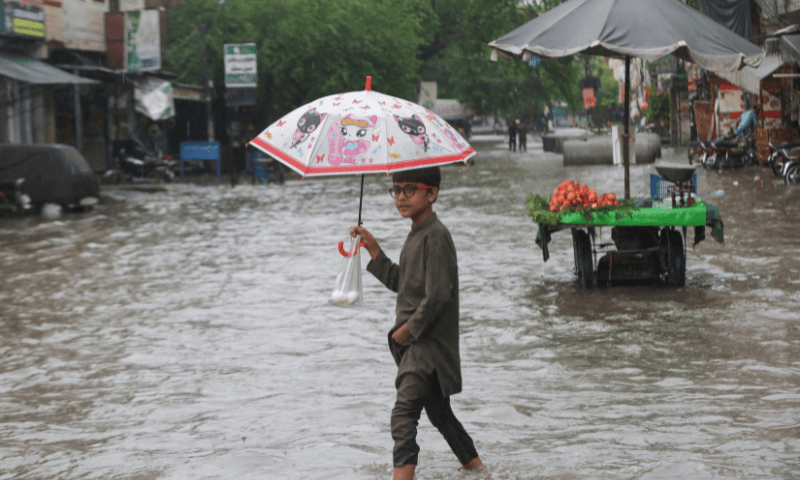Hundreds of people in Gilgit-Baltistan (GB) have fallen victim to water-borne diseases owing to a severe shortage of clean drinking water following devastating floods in the region, government data showed on Thursday.
The devastating impacts of climate change have become more visible in GB as unprecedented heatwaves, erratic weather patterns and glacial melting have triggered cloudbursts and intense floods across the region. On Wednesday, a glacial lake outburst flood (Glof) swept away part of the Karakoram Highway (KKH), while on Tuesday evening, a powerful torrent surged through the Juchar nullah in Gulmit, Gojal, and Hunza, triggered by accelerated glacier melt.
“Diamer, Shigar, Skardu, Astore, and Gilgit are most affected by poor and unsafe water, with the people of these districts being admitted to hospitals and clinics every day,” said GB government spokesperson Faizullah Faraq.
A government report said children under the age of five have also begun falling victim to cholera, diarrhoea, typhoid and pneumonia, among other epidemic diseases.
Thousands of people in Gilgit’s Danyor city are deprived of clean drinking water due to the floods that hit the region on July 21. On Monday, at least seven volunteers died and six were injured early when a landslide hit individuals working at a water channel in Danyor.
Poor quality water because of the disaster is being used through tankers, due to which hundreds of people have fallen sick with stomach diseases.
Faraq noted that work was being done as quickly as possible to restore the water supply and irrigation system.
Dr Muhammad Iqbal, who runs a clinic in the main market in Danyor, said that since spring water has been cut off for the past several days, unfiltered water from tankers is being used.
“This has led to an alarming increase in stomach diseases, and in most health centres, the number of patients with these diseases is higher than other patients,” Iqbal said.
He added that the increase in cases of diarrhoea and cholera had caused a shortage of Flagyl medicine in the market.
Another senior nurse, Zaffar Abbas, said he sees around 20 to 25 patients daily who are suffering from water-borne diseases, adding that this has been an issue for weeks.
“We often stay open till 2am due to the influx of people coming to private clinics since government hospitals have run out of medicines,” he said.
One resident acknowledged that availing a tanker was not in everyone’s budget, leaving poor people still drinking water from the streams. Another questioned whether to spend money on buying clean water or medicines.
GB Health Secretary Asifullah said a total of 3,321 cases of acute diarrhoea were reported in August, of which 607 were registered in Skardu, 440 in Diamer, 486 in Astore, 428 in Ghanche, 267 in Ghizer, 258 in Gilgit, 64 in Hunza, 205 in Kharmang, 220 in Nagar and 346 in Shigar.
Similarly, 565 pneumonia cases were reported in children under five years of age, of which Diamer topped the list with 199, followed by Ghizer with 101, while Astore had 34, Gilgit had 82, Ghanche had 57, Hunza had two, Nagar had 10, and Skardu had 80.
According to the health department report, a total of 272 cases of typhoid fever were reported, of which 140 were in Astore, 80 in Diamer, 30 in Gilgit, 11 in Ghizer, eight in Nagar, two in Hunza and one in Ghanche.
The data showed a total of 56 complaints of suspected cholera were registered, with seven in Diamer, five in Ghanche, 13 in Ghizer, 17 in Nagar, eight in Gilgit, five in Kharmang and one in Skardu.
The report stated that out of 18 cases of hepatitis across the region, eight were reported from Astore, seven from Nagar and three from Hunza district.
It also showed a total of 202 cases of acute respiratory infection, of which Astore recorded 65, Diamer 49, Skardu 43 and five in Ghizer. Among the 218 cases of bloody diarrhoea, Diamer topped with 93 patients, followed by 61 from Astore, according to the data.
A total of 400 cases of influenza-like illnesses, with Gilgit recording the highest number of cases at 133, were reported, according to the data.
